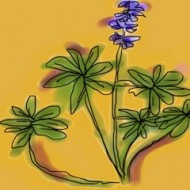The Dry Garden: ‘Canyon Prince’
OF ALL the creatures that disperse plants in nature, we humans may be the quirkiest. Take how we distribute New Zealand flax. We fight back its blades along what seems like every other front walk.
This column is to commend an indigenous alternative to New Zealand flax for the gardens of greater Los Angeles: a type of giant wild rye called Canyon Prince. Ninety-nine percent of the time that flax is used in California, this cultivar of Leymus condensatus could perform the same function, but better.
To keep reading the lastest installment of the Dry Garden in the Los Angeles Times, click here.…
High good, low bad, Mead elevations 1999-2009
Source: federal Bureau of Reclamation. Click on the image for its 2010 operating plan for the Colorado River.
NOT everything went down during the Noughties. While federal Bureau of Reclamation records show that the elevation of Lake Mead, the major “lower basin” Colorado River reservoir serving Arizona, California and Nevada, fell more than 117 feet, the population of the US states served by Mead rose. The US Census Bureau estimates that the population of the driest state in the country, Nevada, climbed 32.3%, while Arizona’s increased 28.6% and California’s 9.1%.
If Lake Mead were a financial institution, people might, stress on might, question the logic of outgrowing one’s resources. As John Fleck of the Albuquerque Journal pointed out after reading the first version of this post, Mead is at its lowest elevation since it was first filled in the 1930s.
But the spendthrift lower basin states such as Nevada have …
« go back

